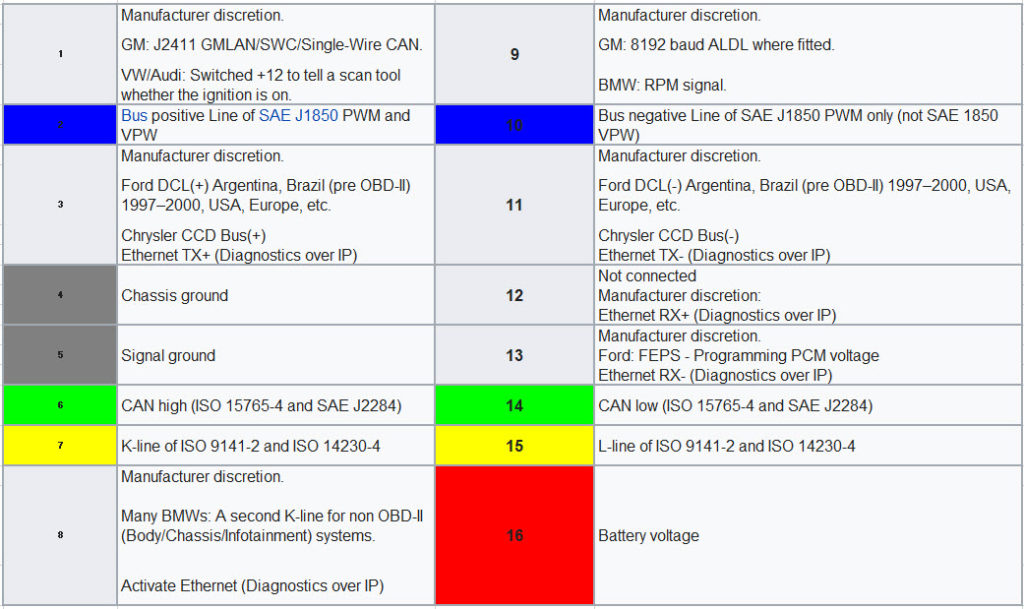On-board diagnostics (OBD) is an automotive concept that refers to a vehicle’s ability to self-diagnose and report. OBD systems provide access to the status of different vehicle subsystems to the vehicle owner or repair technician.
Since the advent of on-board vehicle computers in the early 1980s, the amount of diagnostic information available via OBD has varied greatly. If a problem was found, early versions of OBD would simply illuminate a malfunction warning light or “idiot light,” but would not include any detail about the existence of the problem.
Modern OBD implementations use a standardized digital communications port to provide real-time data as well as a standardized set of diagnostic trouble codes, or DTCs, that enable an individual to quickly identify and correct vehicle malfunctions.
OBD-II provides a standard method for accessing a variety of data, including
- RPM, rpm, pedal position, spark advance, airflow rate, coolant temperature, and other real-time parameters
- What is the status of the “Check Engine” light?
- Status of emission readiness
- Freeze frame: a “snapshot” of parameters taken at the time of a problem.
- Codes for troubleshooting (DTCs).
- The outcome of an oxygen sensor test
- Number assigned to a vehicle (VIN)
- The total number of ignition cycles is
- How many miles have you driven with MIL on?
OBD-II is an acronym for “On-Board Diagnostics
In terms of capability and standardisation, OBD-II outperforms OBD-I. The OBD-II standard defines the type of diagnostic connector and pinout, as well as the electrical signalling protocols and messaging format that are applicable. It also includes a list of potential vehicle parameters to track, as well as instructions on how to encode the data for each. A pin in the connector provides power to the scan tool from the vehicle battery, eliminating the need to attach a scan tool to a separate power source. Some technicians, however, may elect to attach the scan tool to an auxiliary power source in order to protect data in the unlikely event that a vehicle loses electrical power due to a malfunction. Finally, the OBD-II standard includes a number of DTCs that can be expanded. As a result of this standardisation, any vehicle’s on-board computer(s) can be queried by a single device. This OBD-II was available in two versions: OBD-IIA and OBD-IIB. While only emission-related codes and data are expected to be transmitted via the OBD-II Data Link Connector, most manufacturers have made it the only one in the vehicle through which all systems are diagnosed and configured. P for engine and transmission (powertrain), B for body, C for chassis, and U for network are the four-digit OBD-II Diagnostic Trouble Codes.
Diagnostic adapter OBD-II
On a vehicle, there is a female OBD-II connector.
Pinout of a female OBD-II connector seen from the front
The female 16-pin (2×8) J1962 connector is a generic hardware interface in the OBD-II specification. The OBD-II connector, unlike the OBD-I connector, which was often located under the hood of the car, must be within 2 feet (0.61 m) of the steering wheel (unless an exemption is applied for by the manufacturer, in which case it is still somewhere within reach of the driver).
The connector’s pinout is described by SAE J1962 as follows:
